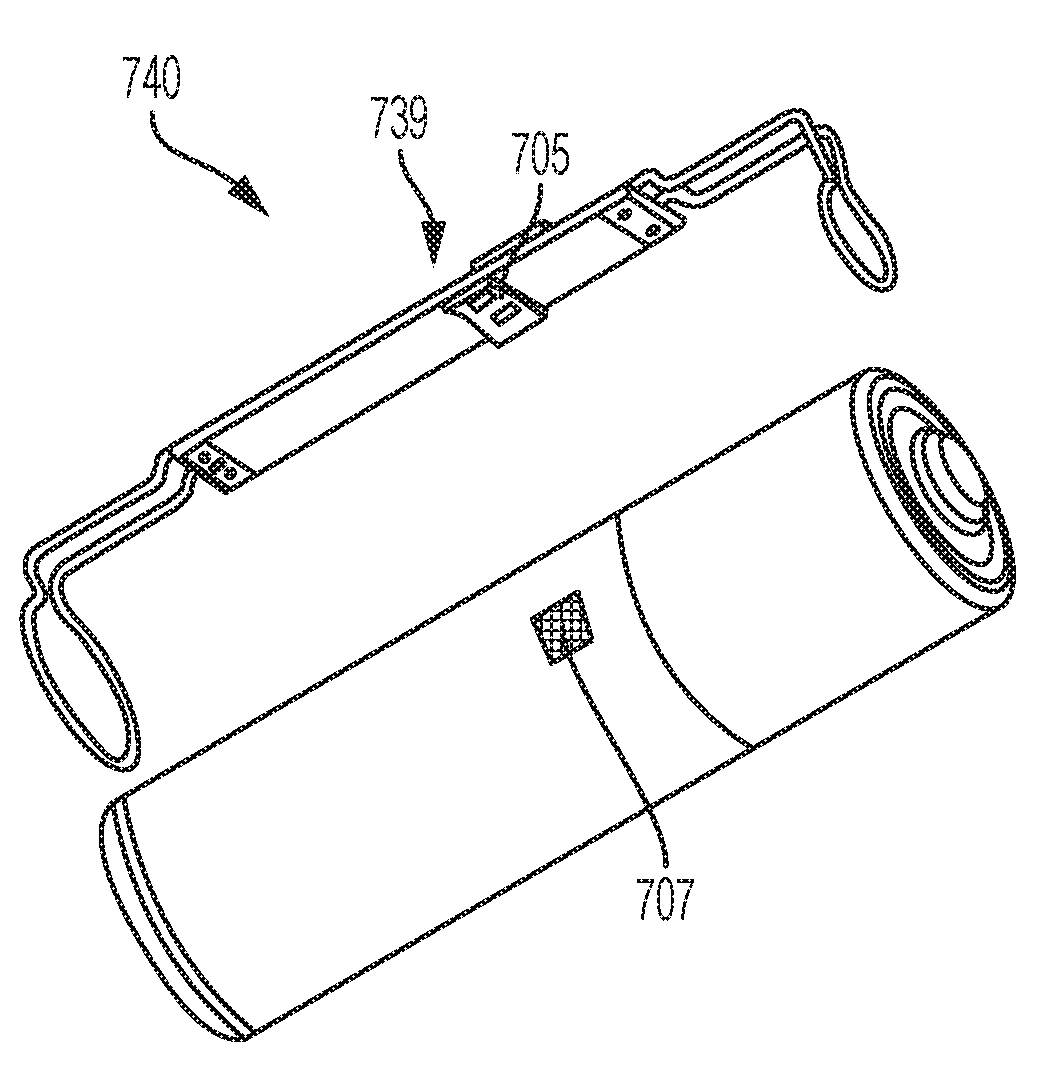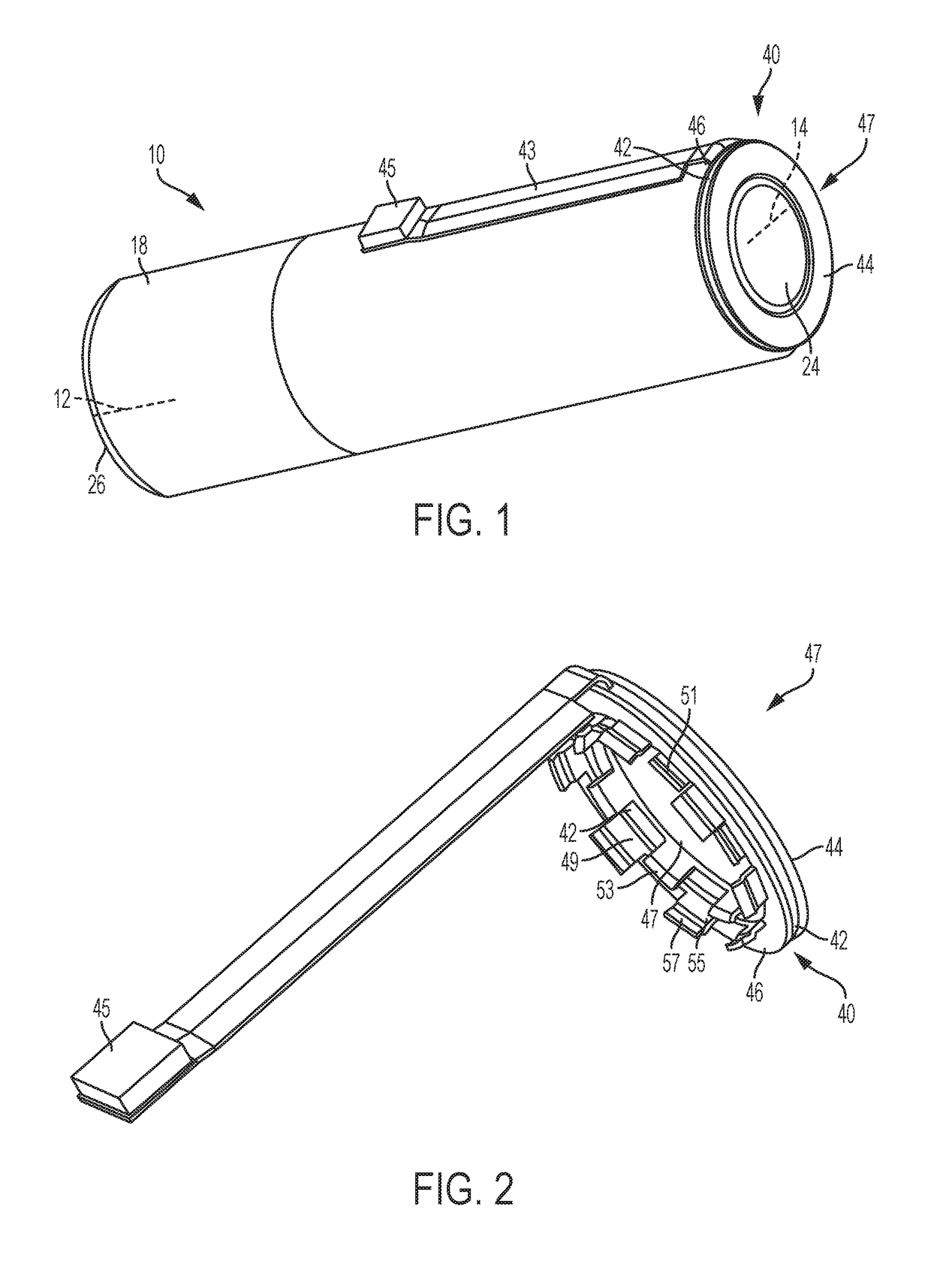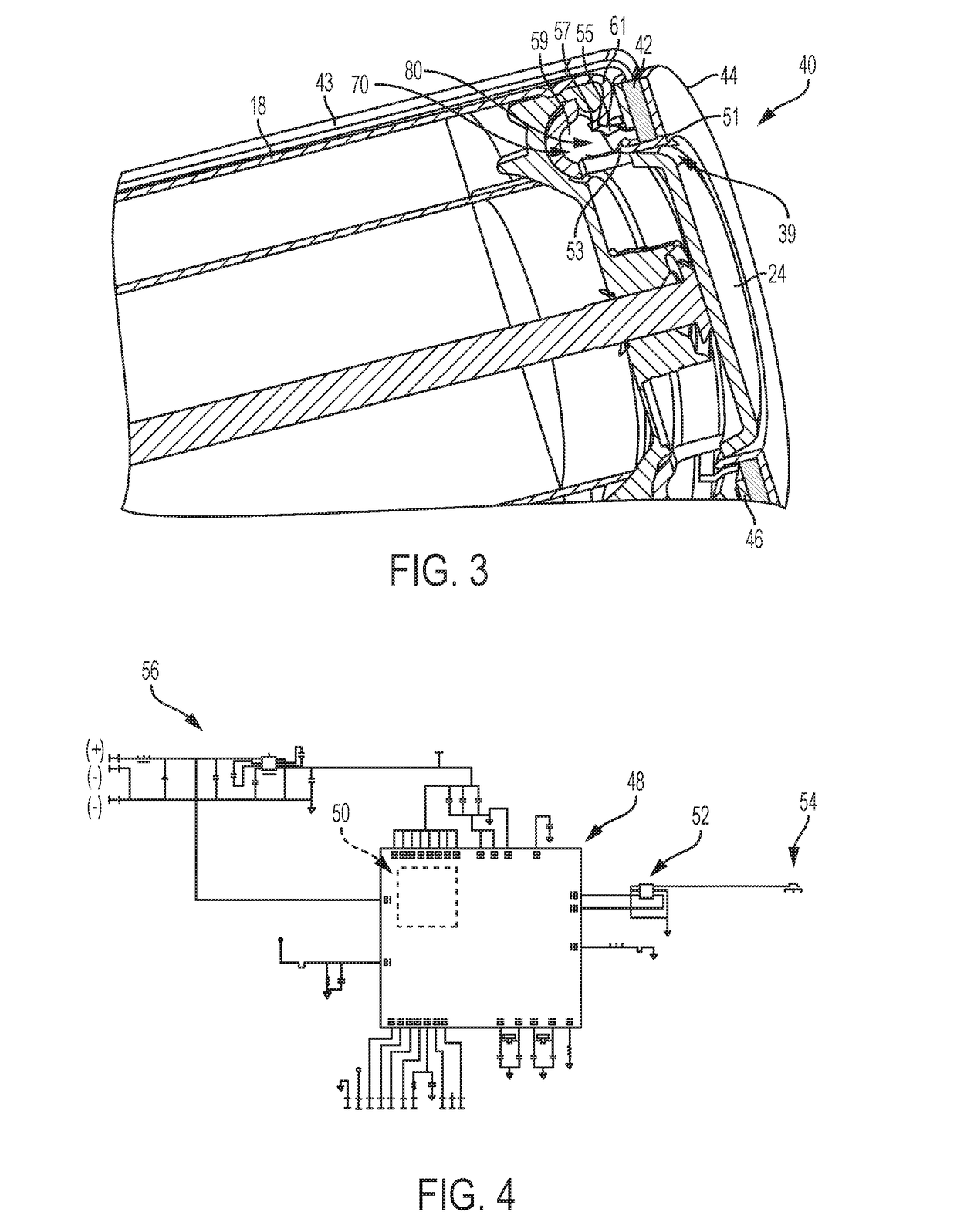Reusable battery indicator with electrical lock and key
a technology of reusable batteries and characteristic indicators, which is applied in the direction of thermometer details, coupling device connections, drug compositions, etc., can solve the problems of single use of current on-cell battery charge indicators, depletion of power, and cumbersomeness
- Summary
- Abstract
- Description
- Claims
- Application Information
AI Technical Summary
Benefits of technology
Problems solved by technology
Method used
Image
Examples
Embodiment Construction
[0040]Electrochemical cells, or batteries, may be primary or secondary. Primary batteries are meant to be discharged, e.g., to exhaustion, only once and then discarded. Primary batteries (or disposable batteries) are described, for example, in David Linden, Handbook of Batteries (4th ed. 2011). Secondary batteries (or rechargeable batteries) are intended to be recharged and used over and over again. Secondary batteries may be discharged and recharged many times, e.g., more than fifty times, a hundred times, or more. Secondary batteries are described, for example, in David Linden, Handbook of Batteries (4th ed. 2011). Accordingly, batteries may include various electrochemical couples and electrolyte combinations. Although the description and examples provided herein are generally directed towards primary alkaline electrochemical cells, or batteries, it should be appreciated that the invention applies to both primary and secondary batteries of aqueous, nonaqueous, ionic liquid, and so...
PUM
| Property | Measurement | Unit |
|---|---|---|
| open circuit voltage | aaaaa | aaaaa |
| volume | aaaaa | aaaaa |
| volume | aaaaa | aaaaa |
Abstract
Description
Claims
Application Information
 Login to View More
Login to View More - R&D
- Intellectual Property
- Life Sciences
- Materials
- Tech Scout
- Unparalleled Data Quality
- Higher Quality Content
- 60% Fewer Hallucinations
Browse by: Latest US Patents, China's latest patents, Technical Efficacy Thesaurus, Application Domain, Technology Topic, Popular Technical Reports.
© 2025 PatSnap. All rights reserved.Legal|Privacy policy|Modern Slavery Act Transparency Statement|Sitemap|About US| Contact US: help@patsnap.com



